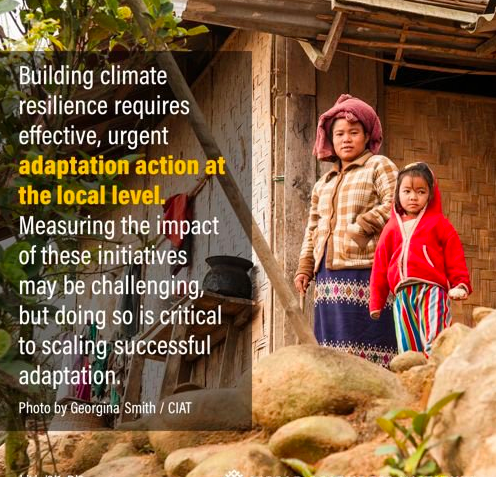Sustainable Transformation In Least Developed Countries: Fostering Resilience

Table of Contents
Economic Growth and Sustainable Development in LDCs
Sustainable development in LDCs cannot be achieved without robust economic growth. However, this growth must be sustainable, inclusive, and resilient to external shocks.
Diversifying Economies Beyond Commodity Dependence
Many LDCs are heavily reliant on the export of a few primary commodities, making them vulnerable to price fluctuations and global market volatility. Diversification is crucial for long-term economic stability.
- Promoting value-added industries: Processing raw materials domestically before export significantly increases revenue and creates higher-skilled jobs.
- Investing in technological advancements: Access to and adoption of appropriate technologies are vital for boosting productivity across various sectors. This includes renewable energy technologies for sustainable growth.
- Developing robust infrastructure: Investments in transportation, communication, and energy infrastructure are essential for connecting markets and facilitating economic activity. This is particularly crucial for renewable energy infrastructure, which can drive both economic growth and environmental sustainability.
- Fostering entrepreneurship and SMEs: Small and Medium Enterprises (SMEs) are the backbone of many economies, and supportive policies are needed to encourage their growth and development. Access to microfinance and business training is crucial.
- Fair trade initiatives: Ensuring fair prices for LDC exports is vital to prevent exploitation and promote sustainable economic growth.
Investing in Human Capital
Sustainable development hinges on investing in people. Education, healthcare, and social protection programs are crucial for improving productivity and fostering inclusive growth.
- Education and skills development programs: Tailoring education and training to meet the needs of the labor market is essential for creating a skilled workforce.
- Improved healthcare access: Good health is fundamental to productivity and well-being. Investing in healthcare systems improves the quality of life and contributes to economic growth.
- Promoting gender equality and empowering women: Empowering women economically and socially is critical for achieving sustainable development. This includes ensuring equal access to education, healthcare, and economic opportunities.
- Addressing malnutrition and food security: Malnutrition hinders development. Investing in sustainable agriculture and food security programs is vital for ensuring a healthy and productive population.
Building Resilience to Climate Change in LDCs
LDCs are disproportionately vulnerable to the impacts of climate change, facing increased frequency and intensity of extreme weather events. Building resilience is paramount.
Climate Change Adaptation Strategies
Proactive adaptation is crucial to minimize the negative impacts of climate change.
- Developing early warning systems: Accurate and timely warnings of impending extreme weather events are vital for saving lives and minimizing damage.
- Investing in climate-resilient infrastructure: Building infrastructure that can withstand the impacts of climate change is crucial for long-term sustainability.
- Promoting sustainable agriculture practices: Adopting drought-resistant crops and water-efficient farming techniques is crucial for ensuring food security.
- Water resource management: Sustainable water management practices are vital for mitigating water scarcity and ensuring access to clean water.
- Protecting biodiversity: Protecting ecosystems and biodiversity enhances resilience to climate change impacts.
Access to Climate Finance and Technology
Securing access to climate finance and technology is crucial for implementing effective adaptation and mitigation strategies.
- Securing funding from international organizations and developed countries: Increased financial support from developed countries is essential for assisting LDCs in their climate change efforts.
- Facilitating technology transfer: Transferring climate-resilient technologies to LDCs is crucial for building capacity and implementing effective solutions.
- Promoting capacity building in climate-resilient technologies: Training and education are necessary to build local expertise in implementing and maintaining climate-resilient technologies.
Strengthening Governance and Institutional Capacity in LDCs
Good governance and strong institutions are essential for effective resource allocation and sustainable development.
Good Governance and Transparency
Accountability and transparency are critical for building trust and ensuring effective governance.
- Promoting accountability and participation in decision-making processes: Involving local communities in decision-making processes ensures that development initiatives are relevant and effective.
- Combating corruption: Corruption diverts resources away from essential services and hinders development. Strong anti-corruption measures are necessary.
- Strengthening rule of law: A strong and independent judiciary is vital for upholding the rule of law and protecting the rights of citizens.
- Enhancing institutional capacity: Investing in the capacity of government institutions is essential for effective governance and service delivery.
Promoting Social Inclusion and Equity
Sustainable development requires inclusive growth that benefits all segments of society.
- Addressing inequalities based on gender, ethnicity, and other factors: Targeted interventions are needed to address inequalities and promote social inclusion.
- Promoting social safety nets: Social safety nets provide crucial support to vulnerable populations and help to reduce poverty.
- Empowering marginalized communities: Empowering marginalized communities ensures that they can participate fully in the benefits of development.
- Ensuring access to basic services: Access to basic services such as education, healthcare, and sanitation is fundamental to human well-being and sustainable development.
The Role of International Cooperation in Sustainable Transformation
International cooperation is crucial for supporting LDCs in their journey towards sustainable transformation.
Development Assistance and Partnerships
Increased and effective development assistance is vital for providing resources and expertise.
- Increased Official Development Assistance (ODA) aligned with sustainable development goals: ODA should be aligned with the SDGs and focus on supporting sustainable and resilient development.
- Promoting public-private partnerships: Public-private partnerships can leverage private sector expertise and resources to achieve development goals.
- Strengthening South-South cooperation: Sharing experiences and best practices among developing countries can accelerate progress towards sustainable development.
Debt Relief and Sustainable Debt Management
High levels of debt can hinder development efforts. Debt relief and sustainable debt management strategies are necessary.
- Debt relief initiatives to free up resources for development spending: Debt relief frees up resources that can be used for essential development programs.
- Promoting responsible borrowing practices: Sustainable debt management strategies are crucial for ensuring that borrowing is used responsibly and does not compromise future development.
- Improving debt management capacity: Building capacity in debt management is essential for ensuring that LDCs can manage their debt sustainably.
Conclusion
Sustainable transformation in Least Developed Countries requires a comprehensive and collaborative effort. By focusing on economic diversification, climate change resilience, good governance, and strong international cooperation, these nations can make significant progress towards achieving their sustainable development goals. Investing in human capital, building resilient infrastructure, and promoting inclusive growth are essential elements of this transformative journey. Continued investment and commitment to sustainable transformation in LDCs are not only crucial for these nations but are also essential for global stability and progress. Let's work together to support these nations in their journey towards a sustainable and resilient future, fostering resilience and achieving lasting sustainable transformation.

Featured Posts
-
 A Cobra Kai Icons Uncertain Future The Return That Almost Wasnt
May 07, 2025
A Cobra Kai Icons Uncertain Future The Return That Almost Wasnt
May 07, 2025 -
 Notre Dame Alumnae Wnba Stars Return For Preseason Game
May 07, 2025
Notre Dame Alumnae Wnba Stars Return For Preseason Game
May 07, 2025 -
 Stil Rianni Analiz Ostannogo Vikhodu U Shirokikh Dzhinsakh Ta Z Dorogotsinnostyami
May 07, 2025
Stil Rianni Analiz Ostannogo Vikhodu U Shirokikh Dzhinsakh Ta Z Dorogotsinnostyami
May 07, 2025 -
 Unexpected Cameo Oscar Winner Joins White Lotus Cast
May 07, 2025
Unexpected Cameo Oscar Winner Joins White Lotus Cast
May 07, 2025 -
 Ontarios Highway 401 Tunnel Fords Call For National Significance
May 07, 2025
Ontarios Highway 401 Tunnel Fords Call For National Significance
May 07, 2025
